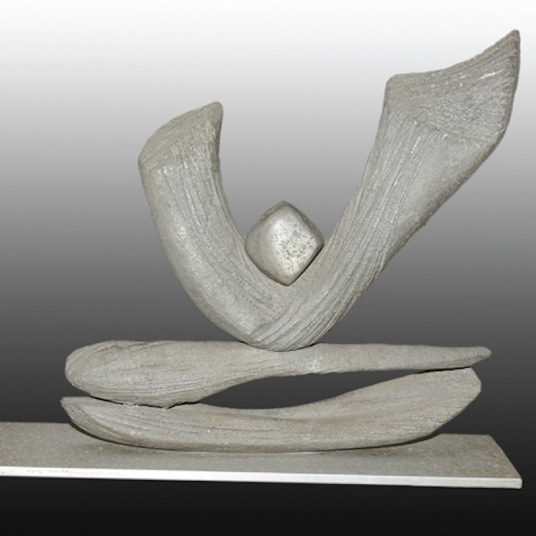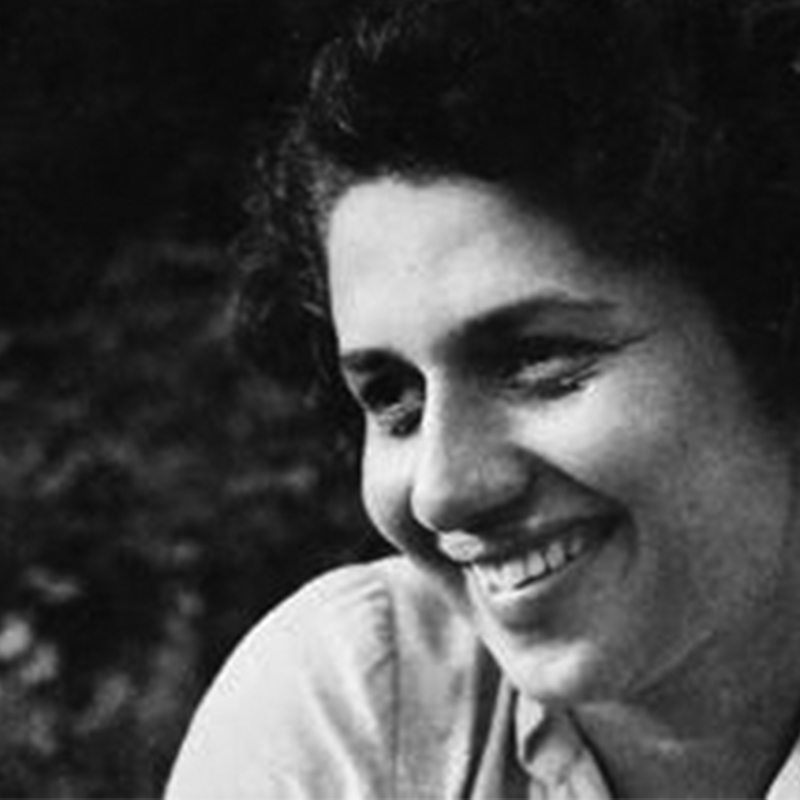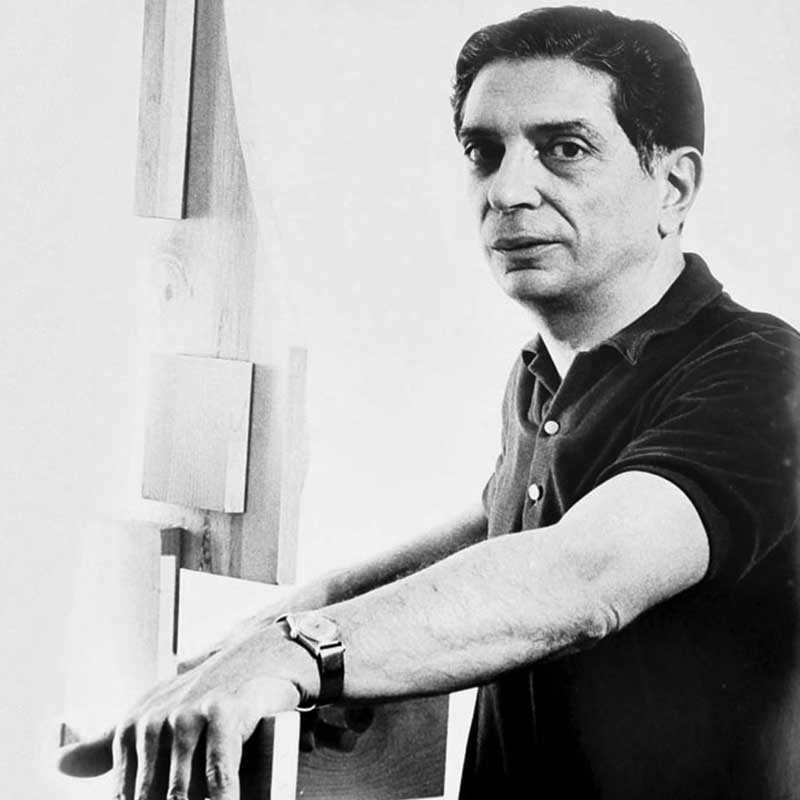
National Gallery of Modern Art, Mumbai: 26th December 2013 - 28th January 2014
National Gallery of Modern Art, New Delhi: 19th March - 19th May 2016
Curated by Pheroza Godrej, Firoza Mistree, Ranjit Hoskote & Nancy Adajania
This exhibit was under the auspices of the ‘Everlasting Flame Programme’ scheme ‘Hamari Dharohar’. It celebrates Parsi history and culture through works by painters, sculptors and illustrators of Parsi origin, produced from the late colonial period to the present. Despite the shared roots of its contributors, the exhibition does not relate directly to the Parsi community or their concerns, but instead explores themes such as nationalism, globalization, colonialism and modernity.
Seven works from the Jehangir Nicholson Art Foundation collection by artists Adi Davierwalla and Piloo Pochkhanawala were loaned for this exhibit that included 4 sculptures and 3 ink on paperworks.

Pilloo Pochkhanawala (1923-1986) was born in Bombay to a Parsi family. In contrast to her religious upbringing, growing up during the struggle for Indian independence resulted in her cultural and political involvement. Pochkhanawala was awarded her BA in commerce from Bombay University, and began her career in the advertising industry. However, following a work visit to Europe in 1951, she was exposed to an array of museums, artists, and sculptors, inspiring her to pursue the visual arts. She was among India’s first few women sculptors.
Pochkhanawala was mentored by N. G. Pansare, who taught her the fundamental techniques of sculpting. Beginning her journey in the 1950s, her first works portrayed the almost fatalistic acceptance of the Indian woman. But soon, her dynamism soon lured her far beyond her natural inventiveness. After a visit to England in 1970, she encountered sculptors such as Henry Moore, Barbara Hepworth, and Kenneth Armitage, who introduced her to the depth of modern sculpture.
Pochkhanawala began to experiment with a number of media and techniques in the 1960s and 1970s, including direct carving, and cement and metal casting. However, she gradually abandoned the conventional wood, cement and beaten lead for scrap iron and steel. She learnt the technique of welding, which helped her fuse fragments of discarded iron and steel to create her signature works. Doing this, Pochkhanawala bridges the gap between a concept and its concrete expression.
Throughout her career, Pochkhanawala had numerous solo exhibitions, both in India and internationally. She was also the recipient of a silver medal from the All India Sculptors’ Association (1954); a silver medal from Bombay Art Society (1954); several prizes at the Maharashtra State Art Exhibition (1955, 1959, 1961); and the Lalit Kala Akademi Award (1979). Not only was she a major artist, but she was also a key mediator and facilitator of the arts in Bombay – she organised the Bombay Arts Festival from the 1960s for many years. She passed away in 1986.

Adi Davierwala (1922-1975) was born in Bombay and was formally trained as a pharmaceutical chemist. He only began experimenting with sculpture in the late 1940s and was relatively self-taught but received some guidance on the basic techniques from N.G. Pasare. He became a full-time sculptor in 1959, after receiving critical acclaim for his work for a decade.
His edgy, futuristic works were inspired both by his training in engineering and technology, as well as Greek mythology and Christian symbolism. Throughout his career, his work consisted of a diverse array of media, including stone, wood, marble, lead, bronze, Perspex, and magnets. He was gifted and innovative enough to imbibe these influences to create sculptures that were both original and individualistic. He started exhibiting his works in Bombay in 1950.
He held his first solo exhibition in 1956, and then his sculptures were displayed at the Sao Paulo Biennale in Brazil in 1963 and the Venice Biennale in 1966. In 1969 his works were included in the travelling exhibition of International Education in the United States, and in the following year, in a group show organised by the Coray Gallery in Zurich. He was the recipient of the Rockefeller Fellowship in 1968, and his show was sponsored by the Bertha Schaefer Gallery, New York in the same year.
Davierwala was the recipient of numerous awards including First Prize at the State Art Exhibition (1957); Gold Medal at the All India Sculptor’s Show (1957); and Prize for Sculpture at the Lalit Kala Akademi exhibition (1965). His work was also commissioned by India’s Atomic Energy Establishment, Larsen & Toubro, and the Life Insurance Corporation. His works are also housed in several public and private collections both in India and internationally.